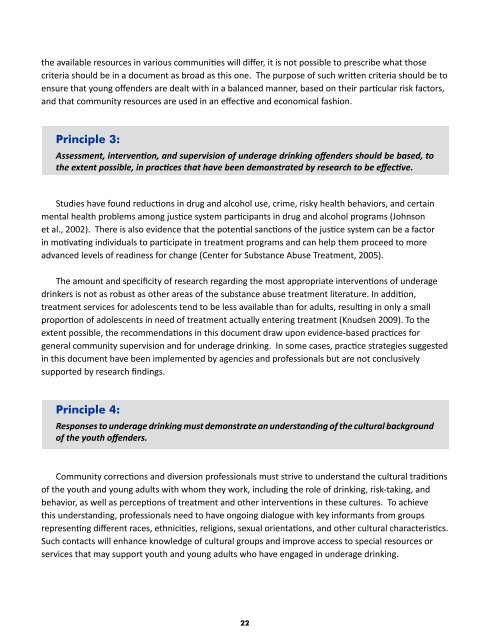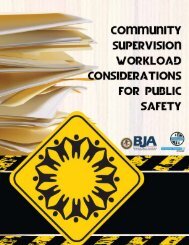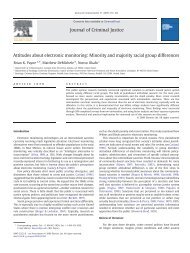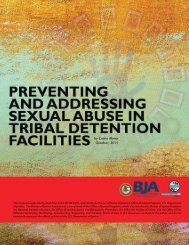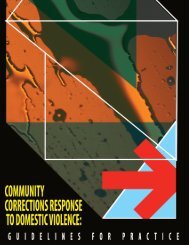Intervention Principles and Practice Guidelines for - Underage ...
Intervention Principles and Practice Guidelines for - Underage ...
Intervention Principles and Practice Guidelines for - Underage ...
You also want an ePaper? Increase the reach of your titles
YUMPU automatically turns print PDFs into web optimized ePapers that Google loves.
the available resources in various communities will differ, it is not possible to prescribe what those<br />
criteria should be in a document as broad as this one. The purpose of such written criteria should be to<br />
ensure that young offenders are dealt with in a balanced manner, based on their particular risk factors,<br />
<strong>and</strong> that community resources are used in an effective <strong>and</strong> economical fashion.<br />
Principle 3:<br />
Assessment, intervention, <strong>and</strong> supervision of underage drinking offenders should be based, to<br />
the extent possible, in practices that have been demonstrated by research to be effective.<br />
Studies have found reductions in drug <strong>and</strong> alcohol use, crime, risky health behaviors, <strong>and</strong> certain<br />
mental health problems among justice system participants in drug <strong>and</strong> alcohol programs (Johnson<br />
et al., 2002). There is also evidence that the potential sanctions of the justice system can be a factor<br />
in motivating individuals to participate in treatment programs <strong>and</strong> can help them proceed to more<br />
advanced levels of readiness <strong>for</strong> change (Center <strong>for</strong> Substance Abuse Treatment, 2005).<br />
The amount <strong>and</strong> specificity of research regarding the most appropriate interventions of underage<br />
drinkers is not as robust as other areas of the substance abuse treatment literature. In addition,<br />
treatment services <strong>for</strong> adolescents tend to be less available than <strong>for</strong> adults, resulting in only a small<br />
proportion of adolescents in need of treatment actually entering treatment (Knudsen 2009). To the<br />
extent possible, the recommendations in this document draw upon evidence-based practices <strong>for</strong><br />
general community supervision <strong>and</strong> <strong>for</strong> underage drinking. In some cases, practice strategies suggested<br />
in this document have been implemented by agencies <strong>and</strong> professionals but are not conclusively<br />
supported by research findings.<br />
Principle 4:<br />
Responses to underage drinking must demonstrate an underst<strong>and</strong>ing of the cultural background<br />
of the youth offenders.<br />
Community corrections <strong>and</strong> diversion professionals must strive to underst<strong>and</strong> the cultural traditions<br />
of the youth <strong>and</strong> young adults with whom they work, including the role of drinking, risk-taking, <strong>and</strong><br />
behavior, as well as perceptions of treatment <strong>and</strong> other interventions in these cultures. To achieve<br />
this underst<strong>and</strong>ing, professionals need to have ongoing dialogue with key in<strong>for</strong>mants from groups<br />
representing different races, ethnicities, religions, sexual orientations, <strong>and</strong> other cultural characteristics.<br />
Such contacts will enhance knowledge of cultural groups <strong>and</strong> improve access to special resources or<br />
services that may support youth <strong>and</strong> young adults who have engaged in underage drinking.<br />
22


